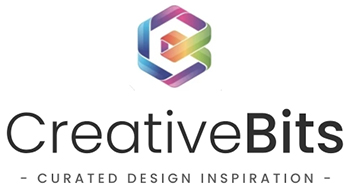The idea of becoming a freelancer is a career decision that many web designers consider at one point or another. Several benefits come with being a freelancer but knowing how to get started in the first place and whether it is a viable solution can seem daunting from the get-go.
We have compiled some information to help you decide whether moving to be a freelancer is the right career decision for you. This post also helps guide you on how to get your freelance career going if you decide it is for you.
Freelancing: The Pros and Cons
Like with anything in life, despite a list of pros, there are also some cons that you should consider before switching to freelancing.
The Pros
The most notable benefit of becoming a freelancer is the independence that it brings to your working environment and schedule.
- You decide where you work – you do not have to commute to work and spend time in the same office every day. You choose your work surroundings.
- You decide when you work – you choose the days and times that you work and how many hours you want to work. Allows for flexible work patterns to work around other life commitments.
- You decide who you work with – Being your boss means you get to choose who you decide to work with.
The Cons
Unfortunately, as we mentioned there are a couple of cons that you should consider before making the switch. When you become a freelance designer, you do more than just design.
- You need to market yourself. Work will not just appear; you need to go and get it. Marketing yourself and advertising the work you do is vital to get work coming in.
- You need to organise invoices and payments. When work is complete you need to produce and send an invoice and then collect the money.
If you have read the pros and cons and feel freelancing is for you, then look at our steps below on how to get started.
Build a portfolio
One of the very first things you will need to do to become a freelance web designer is to build a portfolio. Your portfolio should be a place to showcase some of the best work you have produced. It is the perfect opportunity to show your prospective clients what you can achieve. There are lots of tools available online which can be used to build online portfolios or of course you can design one yourself.
Your portfolio should show a wide range of your available skills to show your clients what you are capable of. Showing that you can do more than one thing is likely to attract a wider pool of clients.
If you are new to web design but still want to go straight to freelancing, it is unlikely you have anything to put in your portfolio. In which case, you should spend some time building sites purposefully for use in your portfolio. You could try talking to friends and family and see if anyone would like a website designed.
If you are just starting, it is a good idea to offer a slightly discounted price to attract your initial clients. Once you have built up a portfolio and have some good feedback under your belt you can begin to raise your prices.
Obtaining your first clients
Once you have a freelancing career underway with a fleshed-out portfolio, you can now start to look for your first clients. A good place to start is with friends and family. Let them know the services you can offer as you never know who might need you.
Even if your immediate friends and family do not require your services currently you could ask them to spread the word to their contacts. It is quite surprising how much work you can obtain just through word of mouth.
Telling your friends and family about in person is one way but another and more prominent way today is through social media. Make sure you are active on social media as it is a great way to promote your business and attract new clients. Build up a reputation in your field by engaging with other website designers and sharing content that discussed new and upcoming trends.
You might want to grow beyond your social circles and that is where third-party freelancing services such as Freelance and Upwork come into play. They take a free but in doing so allows you to reach a much larger pool of potential clients.
Continually improve your skillset
Being a web designer requires constant learning and improvement to remain competitive in the field that is forever changing and evolving.
It is important to not be complacent with the skills you have learned and to continue to improve on the skills that you have. Keeping up to date with the latest design trends and learning additional skills will ensure you remain an effective freelancer.
One of the main skills that web designers lack when it comes to freelancing is the marketing aspects. You need to be able to market yourself effectively to get work regardless of how good your design work is. As a freelance web designer, it would be beneficial to learn skills such as e-mail marketing, inbound marketing, and even PPC campaigns.
*
Starting your journey on becoming a freelance web designer is not going to be easy, but it is likely to be rewarding. If you are craving for some extra flexibility over your working day and location, then now is probably the time to make that move.


Comments are closed.